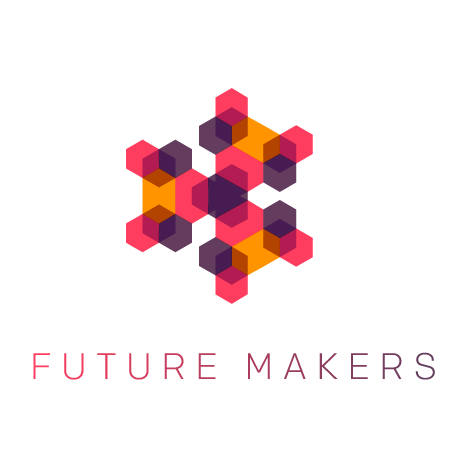Anouk Wipprecht integrates parking sensors and headlights into 3D-printed fashion collection
Future Makers: today we're launching a new collaboration with Autodesk exploring the future of making things. In the first movie in the series, Dutch designer Anouk Wipprecht tells us about the digital tools she used to create a collection of interactive 3D-printed dresses for Audi.
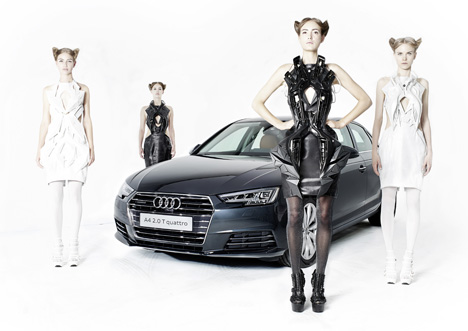
Wipprecht's 3D-printed fashion collection for Audi, which was unveiled during Berlin Fashion Week in July, consists of four dresses that integrate technology found within the German car brand's new A4 saloon car.
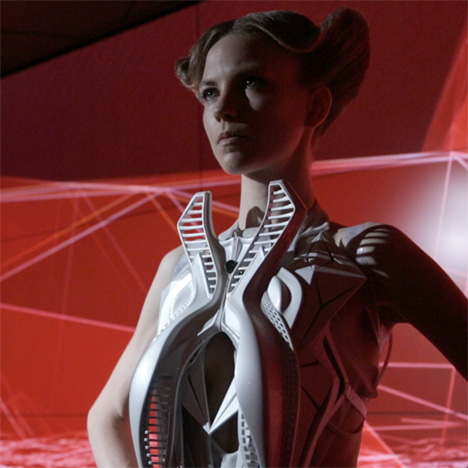
Two of the pieces feature parking sensors, which cause the dress to flash when people get within a certain proximity.
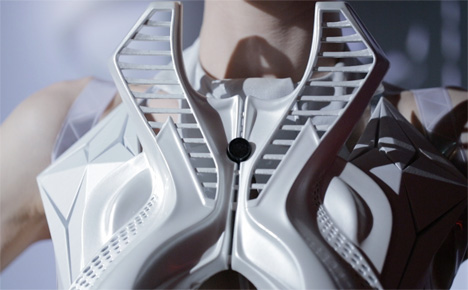
"They're able to sense the surroundings," Wipprecht explains. "So as soon as people approach, my dresses react."
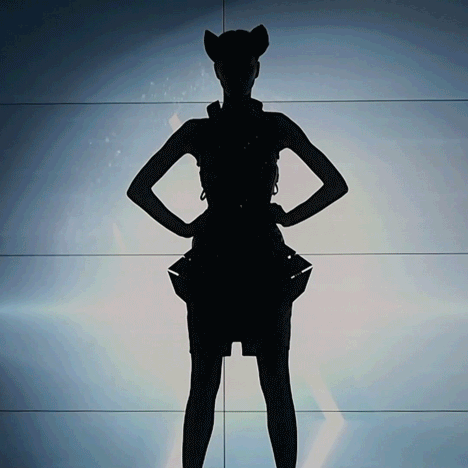
For another dress Wipprecht incorporated 60 watt LEDs from the car's headlights, which emit a blinding flash when triggered.
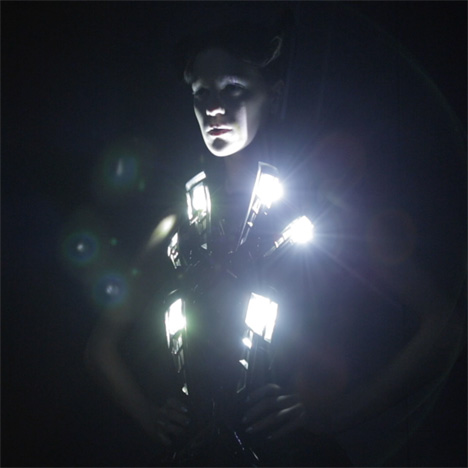
"I took the LEDs of the car and placed [them] within the dress, so this flashing light goes off and its just shining in your face and just blasting you away," Wipprecht says.
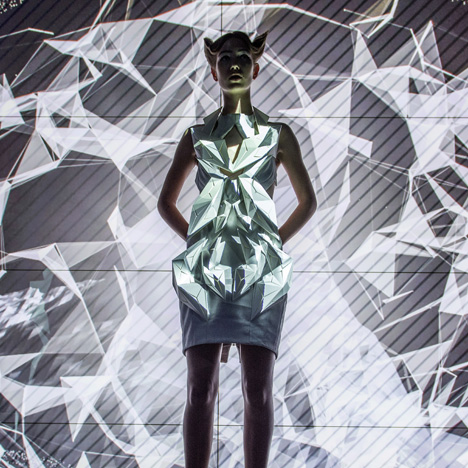
The final dress features an angular white surface, which is designed to be used as a backdrop for projection mapping to give the illusion that it is constantly in motion.
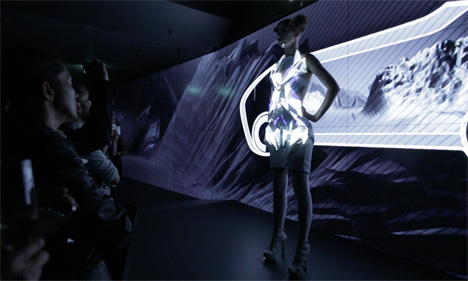
"It's the idea that you are able to have this dress that is always changing," Wipprecht explains. "I would really like fashion to be an interface that can have that kind of behaviour."
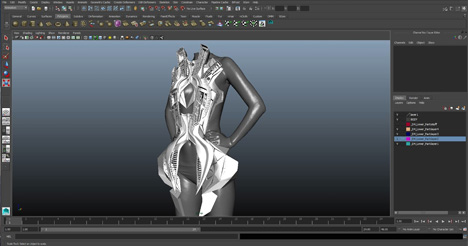
Each of the dresses references the form of the Audi A4, such as the distinctive diamond shape of the grille, and is 3D-printed in plastic.
Wipprecht used 3D software Autodesk Maya to design each of the dresses, in collaboration with Philip Wilck of Studio Palermo. She scanned the models' bodies using a 3D camera developed by Intel called RealSense. By tweaking the designs around that data before printing them out, was able to ensure each dress fitted perfectly.
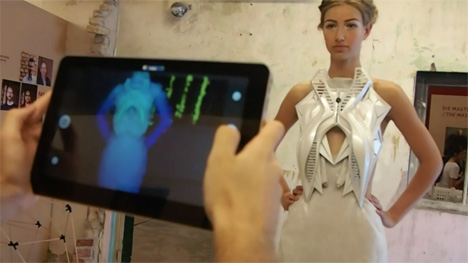
Wipprecht says that the accessibility and affordability of digital tools, and advanced manufacturing technology such as 3D printing, enable designers to work faster and be much more experimental.
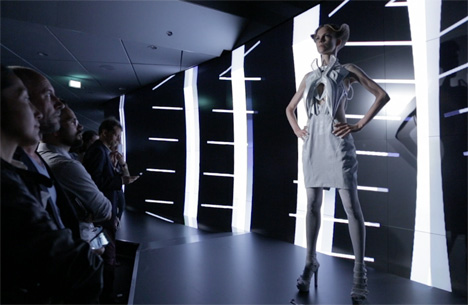
"I can invite my model in the morning, I can scan her in, I can design in the afternoon and I can print it out in the evening," she says. "I think that's something that really helps your design process to be much more rapid and much more explorative."
She continues: "You're able to just do something because you just want to try it out and it makes developing things and innovation much more easy and much more playful. That is something that gets me super excited."
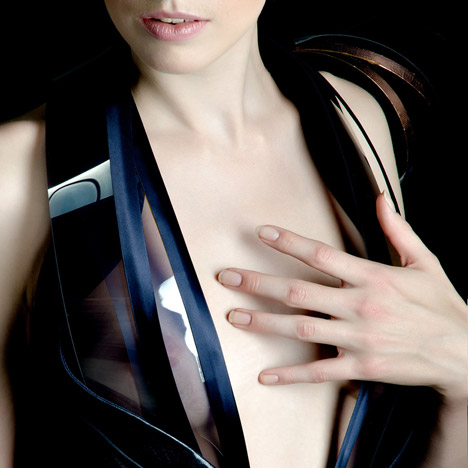
Wipprecht has built a reputation for integrating fashion into technology in interesting ways. In 2012, she worked with fellow Dutch designer Daan Roosegarde to create a series of dresses that become transparent when the wearer's heartbeat increases.
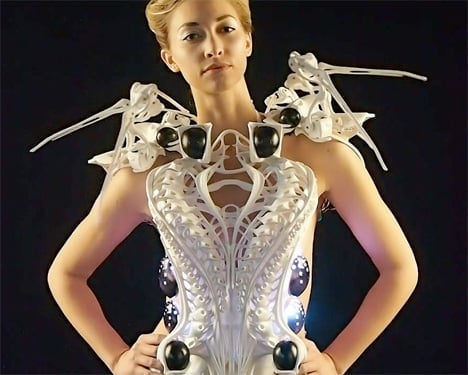
Wipprecht's 3D-printed Spider Dress features a series of moveable legs, which defend the wearer's personal space if someone gets too close, while her Smoke Dress envelopes the wearer in a cloud of mist.
"Fashion is about expression and communication and I want to make that more electronic," she says.
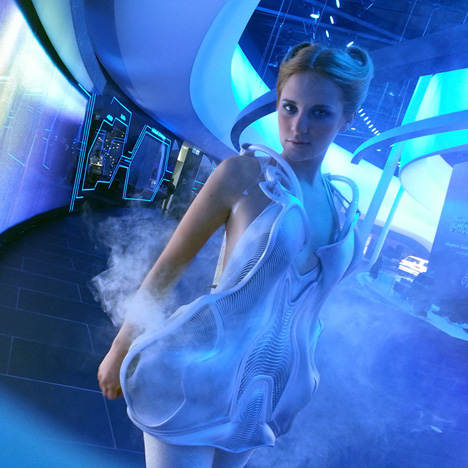
Wipprecht believes that the proliferation of digital design tools means the boundaries between different design disciplines are much more fluid than they used to be.
"I think we're living in a super interesting era because normally you would have a fashion designer or an engineer or an architect, but now our generation is being really pushed to be it all, to be really interdisciplinary," she explains.
Subscribe to Dezeen's YouTube channel for the latest architecture and design movies
"With digital design the cool thing is you're creating a building or a car or a dress, you do it with the same design tools and you're doing it with the same software."
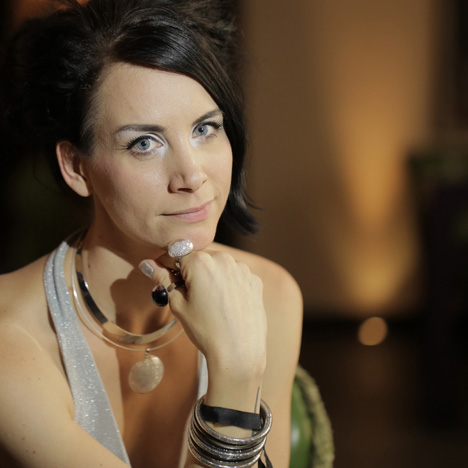
Future Makers is a collaboration between Dezeen and Autodesk exploring how designers are harnessing new digital tools and advanced manufacturing technology to pioneer the future of making things.
